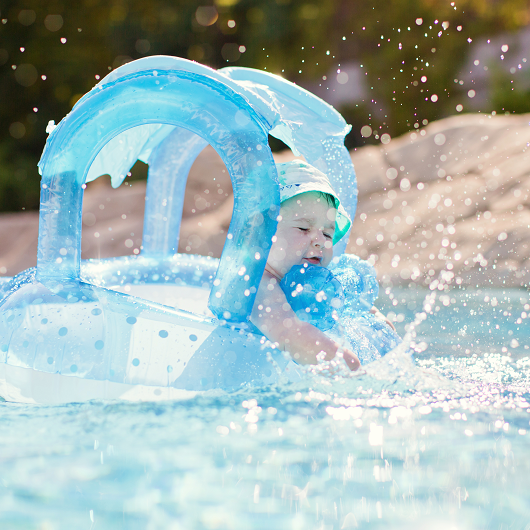Take A ‘Splash’ In These Facts About Swimmer’s Ear – Even If You Don’t Swim

July 27, 2018
Let’s dive right into it… ear infections aren’t pleasant. In fact, some would describe them as a nagging, uncomfortable (and sometimes even unbearable) pain. In the summer, one of the more common types of ear infections is Swimmer’s ear – and yes, this affects non-swimmers, too.
According to Thomas E. Brandeisky, D.O., FAOCO, a board certified otolaryngologist and plastic surgeon of the head and neck at Brick Ear, Nose, and Throat (ENT) & Facial Plastic Surgery, Swimmer’s ear is an infection of the ear canal, which runs from your eardrum to the outside of your head. “In its simplest form, it is a painful swelling of the ear canal which causes drainage and hearing loss,” explains Dr. Brandeisky.
What causes Swimmer’s ear?
Swimmer’s ear is a form of otitis externa usually caused by excessive water exposure and, for this reason, might be more common in children during the summer – but can affect people of all ages. In addition to water retention in the ear canal, Dr. Brandeisky shares that other risk factors include:
- Bacteria-fouled water exposure in lakes and the ocean
- Aggressive ear cleaning with Q-tips or other foreign objects
- Abrasions of the canal skin which can create openings for infection
- Inflammatory skin conditions, like eczema and psoriasis, and chemical sensitivity can predispose people to infection
…That’s right, Swimmer’s ear can occur without ever swimming.
What are the symptoms?
“Initially the ear can itch or feel mildly uncomfortable,” says Dr. Brandeisky. “Tenderness can be elicited by pulling on the ear itself.”
Other signs of Swimmer’s ear may include:
- Painful chewing
- Outer redness of the ear
- Enlarged and/or tender ears
- Drainage of clear, odorless fluid
- Hearing might be temporarily affected
As the condition worsens, pain and swelling can increase and pus can replace the thinner, clear discharge. “The lymph nodes of the neck can become infected and fever can develop, too,” warns Dr. Brandeisky.
What are the available treatment options?
“Treatment can be as simple as application of ear drops containing antibiotics and a steroid,” says Dr. Brandeisky. “However, if the canal is too swollen to admit drops, an ENT physician will need to place a ‘wick’ in the canal to hold medication against the infected skin.”
“Advanced cases involving infection of the surrounding skin, or cellulitis may require the addition of oral antibiotics and steroids,” continues Dr. Brandeisky. “Rarely, hospitalization for IV medication is required. With early attention, pain can be rapidly reduced, and hearing restored.”
Untreated, the canal can swell closed and infection can extend beyond the ear canal into the scalp above and behind the ear, as well as to the side of the face. Otitis externa can become chronic otitis externa, or an ear infection for 3 months or longer.
How can I prevent Swimmer’s ear?
Follow these tips to try to avoid Swimmer’s ear:
- Keep your ears dry and/or wear ear plugs while swimming
- Swim wisely and avoid areas with high bacteria
- Avoid putting foreign objects in your ear
- Protect your ears from irritants, such as hair sprays and perfumes
Next Steps & Resources:
- Meet our source: Thomas E. Brandeisky, D.O., FAOCO
- To make an appointment with a doctor near you, call 800-822-8905 or visit our website.
The material provided through HealthU is intended to be used as general information only and should not replace the advice of your physician. Always consult your physician for individual care.





